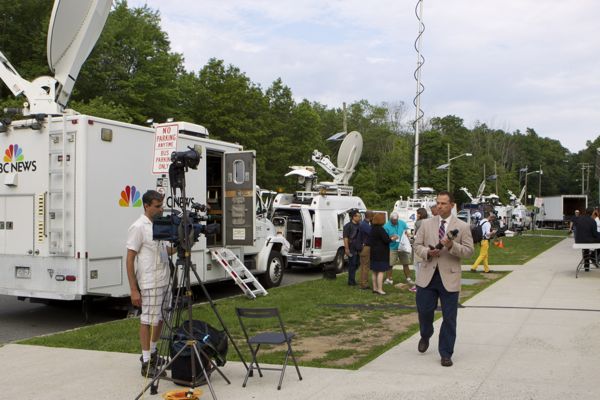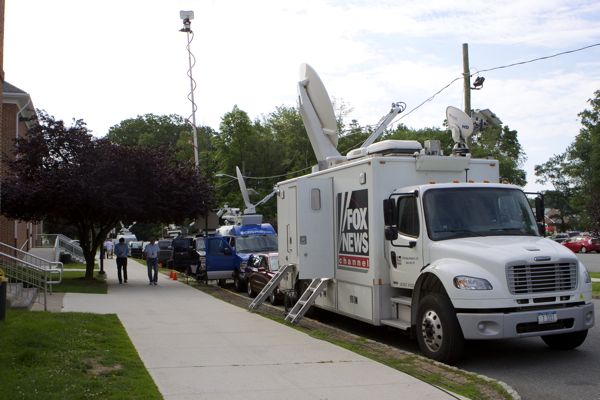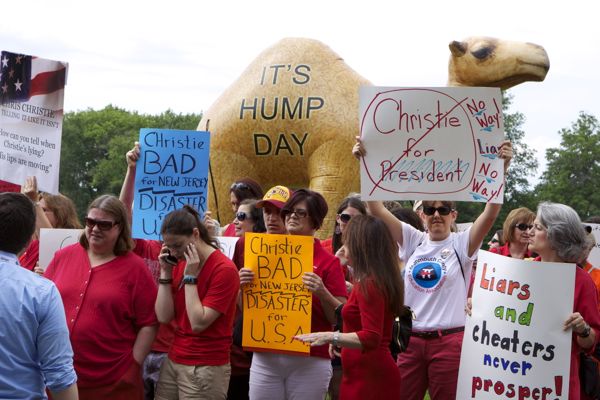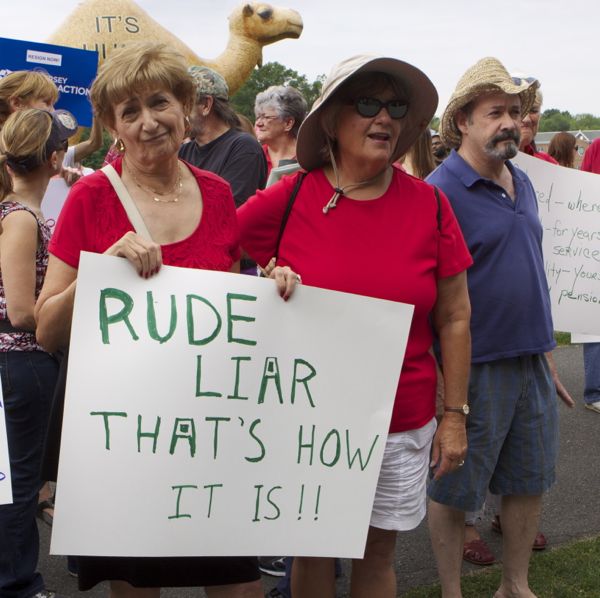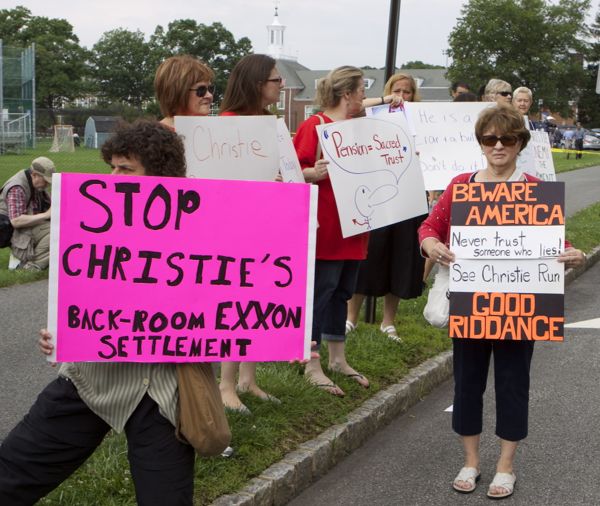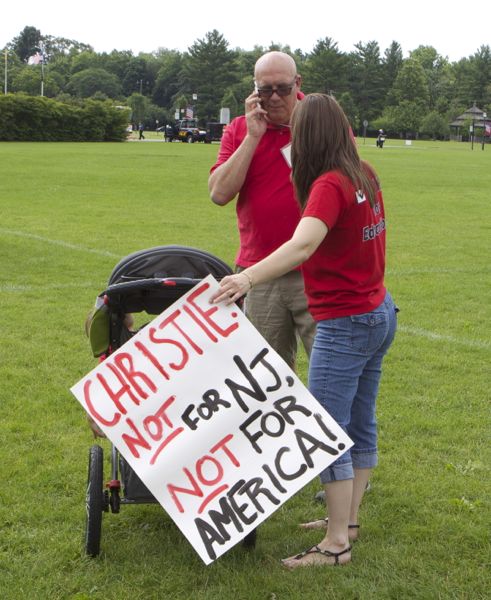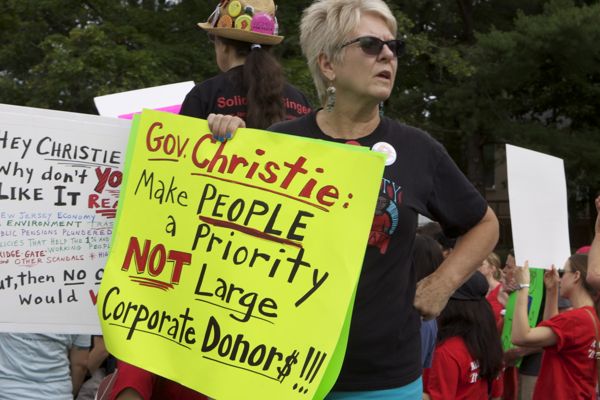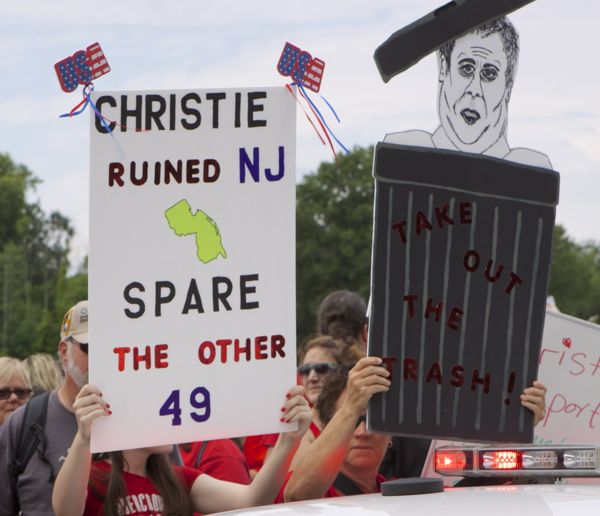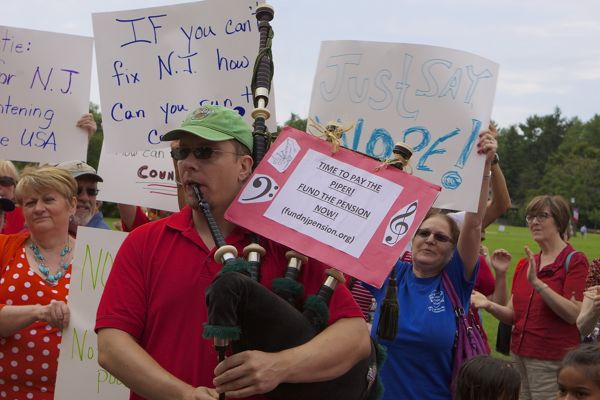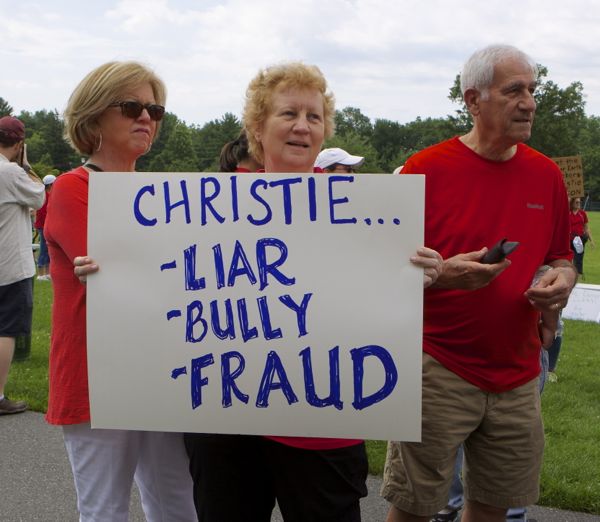Radical New Mitigation Scheme Not Authorized by Legislature
Elimination of Flooding, stream buffer and water quality protections inconsistent with legislative intent
Conservation, Coastal, and Watershed Groups Are AWOL – Why?
Last night, DEP held the final public hearing on a radical proposal that would weaken protections from flooding and water pollution – for a general overview and first cut summary of all the flagrant rollbacks of the DEP proposal, see:
I attended and testified at the first public hearing which was held last week at the DEP building in Trenton.
I talked about the history of the Category One buffer program that the Christie DEP was repealing.
I explained why the developers hated it, and highlighted how it protected about 2,000 miles of streams with 300 foot wide buffers (do the math and figure out how many acres of ecologically sensitive land were protected at no cost to the taxpayers).
The C1 program killed numerous large corporate office park and housing developments, from Windy Acres in Clinton to Berwind in Hopewell, and many more across the State. It seems like Conservation groups don’t even understand how and why some of their land deals came about.
In fact, the Christie DEP’s own scientists recommended that the C1 program had a strong scientific basis and that it be expanded to 121 miles of new “exceptional value” streams
The C1 program, which prohibits buffer disturbance, would be repealed and the existing “stream encroachment permit” program standards on destruction of riparian buffer vegetation and disturbance would be weakened and effectively replaced by a mitigation scheme and scam oriented mitigation bank.
DEP research suggests that wetlands mitigation does not work, see:
Despite this failure, the DEP failed to provided a scientific basis for the new proposed stream bank./riparian mitigation scheme. Nor is such a scheme legally authorized in Legislation.
I am told that only 4 Sierra Club members and 3 residents testified in opposition to the proposal last night. There was a similar low turnout at the 1st hearing in Trenton.
There has been only one news story, a NJ Spotlight “he said she said” by Scott Gurian.
As usual, the subscription service to the legal community “Law360″ is competent and understands the rollbacks and published a story under this headline:
The lack of opposition by environmental groups (other than Sierra, Clean Water Action, Stonybrook Watershed, and ANJEC) is deeply disturbing – no, the silence is disgusting.
The failure to publicly denounce this Christie DEP rollback is tacit support of the proposal.
Even worse. the silence might reflect economic self interests, because some conservation groups (like Audubon, ALS, & NJCF) and watershed groups that do stream bank and riparian restoration work could receive huge financial benefits from the radical new mitigation scheme.
That work could generate mitigation credits that would be bought, sold, and traded by a mitigation bank. Additionally, there will be a ton of new money invested in stream bank and riparian restoration work, including consulting work groups like Audubon do.
In an effort to get some public awareness of just how bad this rule proposal is, today I urged legislators to conduct oversight hearings to get the facts out to the public and the press.
If you read nothing else, just get the regulatory history I highlight in the first 5 bullets.
Senators should be very interested in this DEP rule, given their sponsorship and votes in favor of a bill to require DEP update flood hazard maps that passed yesterday (Assembly version passed)and is now on Gov. Christie’s desk:
From: “Bill” <bill_wolfe@comcast.net>
To: senbsmith@njleg.org, senweinberg@njleg.org, sengordon@njleg.org, sengreenstein@njleg.org,senbateman@njleg.org
Cc: kduhon@njleg.org
Sent: Friday, June 26, 2015 1:11:17 PM
Subject: Flood Hazard Act – DEP Rule proposal – request for Legislative oversight
Dear Senators –
As you may know, on June 1. 2015, DEP proposed sweeping new rules under the Flood Hazard Control Act, see:
http://www.nj.gov/dep/rules/notices/20150601a.html
The rules are designed, according to DEP, to “relieve regulatory burden” in accordance with Governor Christie’s Executive Orders #2 (regulatory relief) and #3 (reduction of burdensome Red Tape).
The proposal is a radical departure from almost two decades on regulatory policy and practice. It is fatally flawed and will increase flood risks and reduce water quality.
Among many other things, the proposal would
1) repeal and eliminate the “Category 1″ 300 foot stream buffer program incorporated in the DEP storm water management rules that were adopted during the McGreevey Administration;
2) systematically roll back regulatory protections enacted during the Corzine Administration, which incorporated and expanded the scope of the Category One stream buffers in the DEP Flood Hazard Act stream encroachment permit program;
3) create a radically new stream mitigation program and mitigation bank that would provide relief from current stream buffer protections.
The mitigation scheme lacks legislative authorization and is inconsistent with legislative intent under the Flood Hazard Act;
4) propose numerous new technical loopholes that would promote new development in flood hazard areas; reduce or eliminate current protections for stream buffer and riparian vegetation; reduce water quality; put more people and property in harms way; and reduce or eliminate DEP and/or public reviews; and
5) ignore climate change impacts and risks, which include increased frequency and severity of extreme weather,including rainfall and flooding events. Climate impacts magnify flood risks caused by hydrological changes caused by NJ’s high degree of development and imperious surfaces. The rule also ignores prior FEMA objections to DEP’s Emergency Flood Rule enacted in the wake of Sandy.
Below is my first round of comments on the DEP proposal.
Given the above fatal flaws, I urge you to conduct legislative overnight hearings on they rule proposal BEFORE the DEP adopts the rule.
Should DEP adopt the rule, I would urge you to review and reject the proposal as inconsistent with Legislative intent” pursuant to your Constitutional legislative veto powers.
I am available to discuss at your convenience.
Respectfully
DEP Comments – Round 1
Dear DEP – below please find Part 1 of my written comments. These comments are in addition to my testimony at the public hearing. I reserve the right to revise and extend those comments until the close of comment period.
1. Delegation to local Soil Conservation Districts
Throughout the subject proposal, the Department would delegate certain powers, functions, and technical regulatory decisions, to local Soil Conservation Districts authorized by the Soil Erosion and Sediment Control Act.
The proposal states:
“The Department is proposing to delete all standards and requirements related to acid producing soil deposits in the FHACA Rules, as well as to delete reference to acid producing soil deposits from the riparian zone special area in the CZM rules, and to instead rely on local Soil Conservation Districts to mitigate potential impacts resulting from exposure of such deposits, as required under the Standards for Soil Erosion and Sediment Control in New Jersey at N.J.A.C. 2:90.” e.g. See: N.J.A.C. 7:13-11.2(j)1)
The Department may not delegate these powers by law.
The Flood Hazard Act circumscribes the Department’s delegation powers, limiting them to certain qualified County governing bodies, and establishes delegation standards and a review process:
NJSA 58:16A-55.6. Delegation of power to approve or disapprove application to county governing body
The Department of Environmental Protection may delegate its power to approve or disapprove any application made to it pursuant to this act and its power to enforce any aspect of this act to a county governing body which agrees to accept such designation and in the department’s judgment is capable of utilizing the rules, regulations and standards adopted by the department for the administration of this program. The department shall review this delegation at least biannually and may revoke such delegation for failure to properly administer such delegated powers. The county governing body may charge the same fees promulgated by the commissioner pursuant to P.L. 1975, c. 232 (C. 13:1D-33), when such powers are delegated to it.”
The proposed delegation to local Soil Conservation Districts is not only not authorized by the Flood Hazard Act but is expressly inconsistent with the delegation provisions of the Act.
2. Deference to Local Soil Conservation Districts
The Department is proposing new requirements for a stormwater outfall structure. They include a new policy described by the Department as “Added deference to local Soil Conservation District for stability issues”.
This policy lacks any asserted legal and scientific basis and is unsound public policy, and is therefore ultra vires, as well as arbitrary, capricious and an abuse of discretion.
3. Mitigation scheme and creation of mitigation bank
The proposal includes a new SUBCHAPTER 13. RIPARIAN ZONE MITIGATION, which is sweepingly broad in scope and hugely significant in substance, both economically and environmentally.
A change in regulatory policy of this magnitude requires express statutory authorization by the Legislature.
The Flood Hazard Act (Act) does not authorize the Department to enact regulations that would create a mitigation scheme or a mitigation bank.
The Act lacks any provision for “mitigation” or a “mitigation bank”.
In contrast, the Act clearly establishes standards and authorizes the Department to enact regulations to enforce these legislative standards via a traditional regulatory permit program.
The Act does not specifically – or implicitly – authorize a mitigation program and mitigation bank – nor does any other authority the Department relies on as the legal basis for the proposal.
Because such a program is a radical departure from many years of DEP regulatory policy and practice, the Department’s proposal is ultra vires, not legislatively authorized, and contrary to law and the express framework and provisions of the Act.
The mitigation scheme and mitigation bank are also inconsistent with legislative intent.
The proposal must be withdrawn.
4. Request for Attorney General’s Opinion and OLS opinion
In my prior career with the Department, the Department’s Rulemkaking guidance required that the Attorney General and OLS conduct a legal review prior to proposal.
On issues of significant regulatory policy change and/or significant economic and/or environmental implications, the AG and OLS would conduct heightened scrutiny pre-proposal review to ensure an adequate legal and technical bsis for the proposal.
I request that the AG’s Office and OLS conduct a thorough review and issue a written legal opinion with respect to the legal basis for the subject proposal, as well as the legal adequacy of the flaws identified in comments #1 – #3 above.
